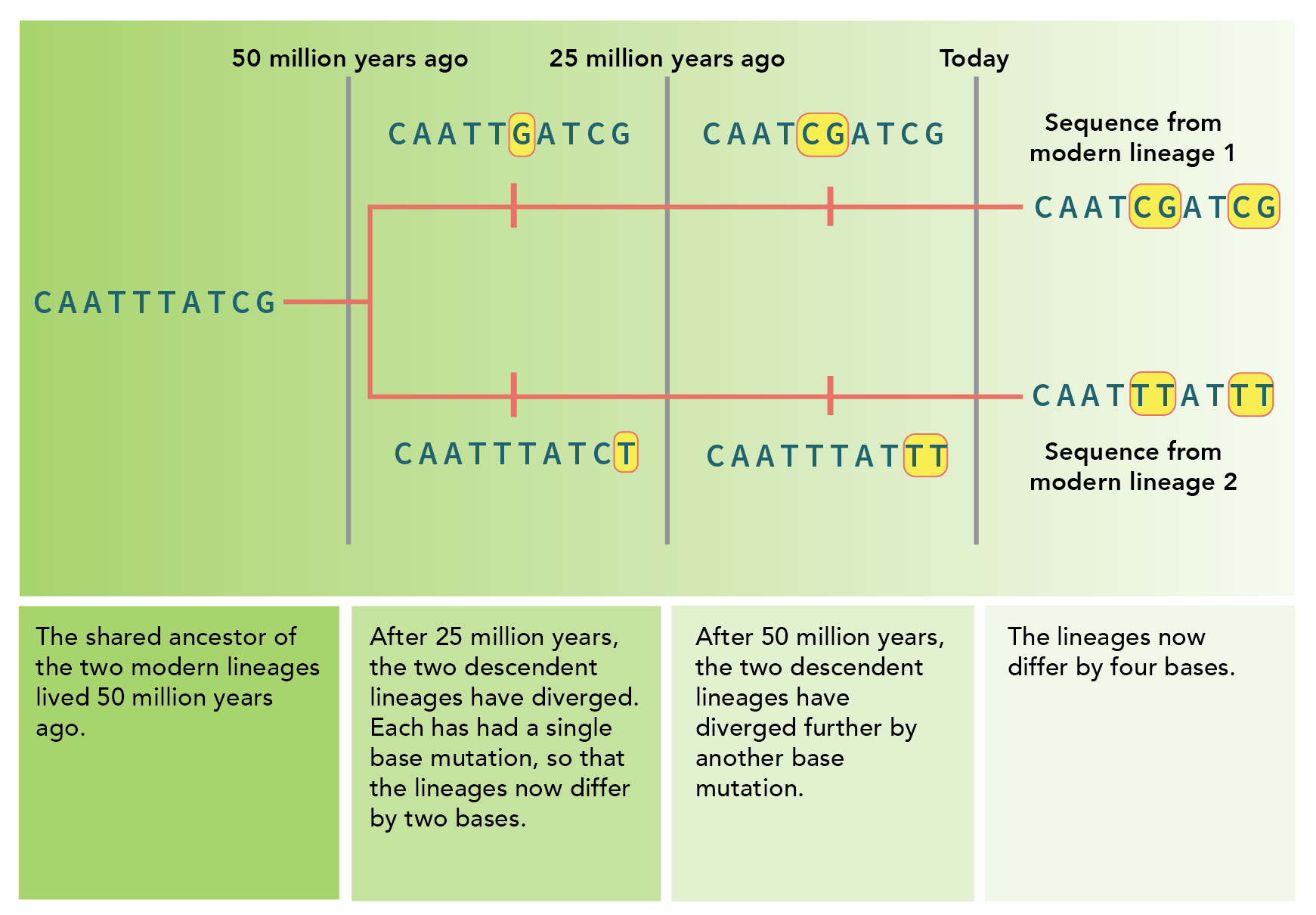For the past 40 years, evolutionary biologists have been investigating the possibility that some evolutionary changes occur in a clock-like fashion. Over the course of millions of years, mutations may build up in any given stretch of DNA at a reliable rate. For example,the gene that codes for the protein alpha-globin (a component of hemoglobin) experiences base changes at a rate of .56 changes per base pair per billion years1. If this rate is reliable, the gene could be used as a molecular clock.
When a stretch of DNA does indeed behave like a molecular clock, it becomes a powerful tool for estimating the dates of lineage-splitting events. For example, imagine that a length of DNA found in two species differs by four bases (as shown below) and we know that this entire length of DNA changes at a rate of approximately one base per 25 million years. That means that the two DNA versions differ by 100 million years of evolution and that their common ancestor lived 50 million years ago. Since each lineage experienced its own evolution, the two species must have descended from a common ancestor that lived at least 50 million years ago.
This general technique has been used to investigate several important issues, including the origin of modern humans, the date of the human/chimpanzee divergence, and the date of the Cambrian “explosion.”
Using molecular clocks to estimate divergence dates depends on other methods of dating. In order to calculate the rate at which a stretch of DNA changes, biologists must use dates estimated from other relative and absolute dating techniques.
Learn more about molecular clocks in context: Evolutionary evidence takes the stand, a news brief with discussion questions.
1This number is for changes that affect the structure of the protein.

